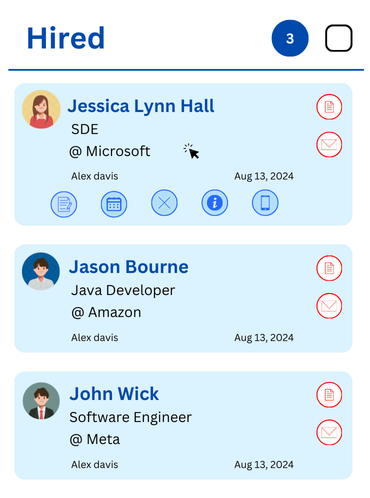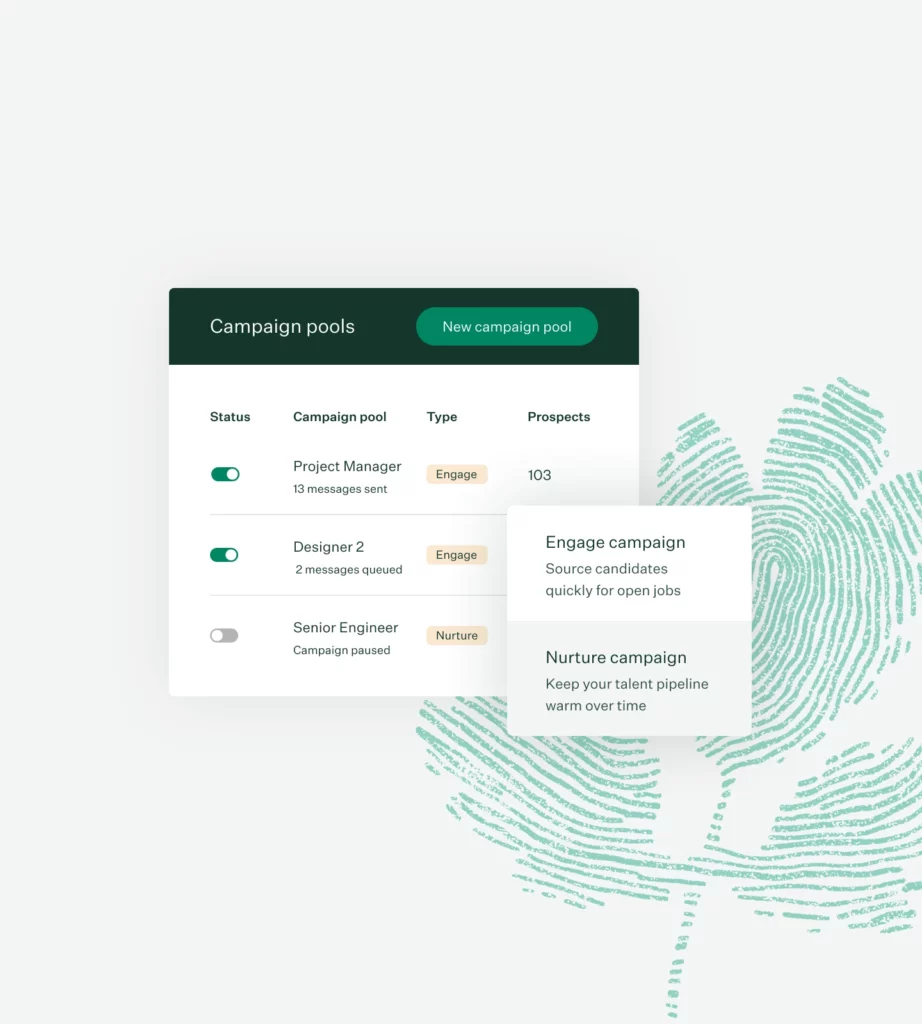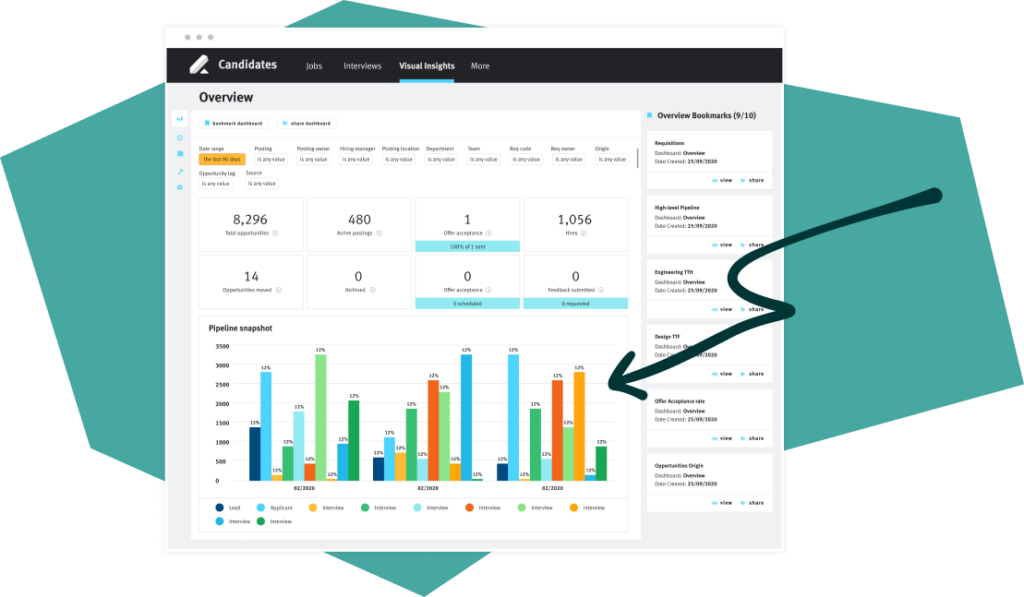Table of Contents
ToggleThe recruitment landscape is evolving, and traditional hiring methods are no longer enough to attract and retain top talent. Companies that fail to optimize their hiring process risk losing high-quality candidates to more agile competitors. A streamlined, technology-driven recruitment strategy can help businesses identify, evaluate, and onboard the right people efficiently.
The Key Phases of an Effective Hiring Process
To build a strong workforce, organizations need a structured and adaptable recruitment strategy. Here’s a fresh approach to modern hiring:
1. Define the Role with Precision
A generic job description can deter top talent. Instead of listing broad responsibilities, focus on:
- Key deliverables for the role.
- Opportunities for growth and impact.
- Required skills vs. preferred qualifications (separating must-haves from nice-to-haves).
Clearly outlining expectations from the start helps attract candidates who are truly the right fit.
2. Diversify Talent Acquisition Channels
Companies often rely too heavily on traditional job boards, missing out on high-potential candidates. Expanding your reach can broaden the talent pool. Consider:
- Hosting virtual hiring events to engage with active job seekers.
- Collaborating with universities and industry organizations to access emerging talent.
- Leveraging social media to showcase company culture and job opportunities.
A multi-channel approach ensures a steady stream of top-tier candidates.
3. Implement AI-Driven Resume Screening
Recruiters spend countless hours reviewing applications. By using AI-powered applicant tracking systems (ATS), businesses can:
- Instantly identify top applicants based on relevant experience and skills.
- Automate repetitive tasks like resume parsing and keyword filtering.
- Reduce unconscious bias by focusing on objective data rather than subjective first impressions.
Smart technology improves hiring efficiency and ensures quality candidates don’t slip through the cracks.
4. Reinvent the Interview Process
Instead of relying solely on one-on-one interviews, companies can gain deeper insights by:
- Using practical assessments that replicate real job tasks.
- Conducting panel interviews to evaluate collaboration skills.
- Holding informal video chats to assess personality and culture fit.
A well-rounded interview process provides a more accurate prediction of a candidate’s success in the role.
5. Go Beyond Basic Reference Checks
Traditional reference checks often involve verifying past job titles and responsibilities, but they should be more insightful. Employers should:
- Ask about work habits, problem-solving skills, and adaptability.
- Gather feedback on collaboration and leadership abilities.
- Inquire about areas for improvement to assess growth potential.
A strategic reference check adds depth to the hiring decision.
6. Deliver an Exceptional Job Offer Experience
Top candidates often receive multiple offers, so the hiring process shouldn’t stop at selection. To increase offer acceptance rates:
- Personalize the offer based on what matters most to the candidate (e.g., career growth, flexibility, benefits).
- Clearly outline compensation, perks, and expectations to build trust.
- Follow up quickly to reinforce enthusiasm and prevent competitor interference.
A well-crafted offer can make the difference between landing and losing a great hire.
7. Design an Engaging Onboarding Program
A structured onboarding process can improve employee retention and productivity. Instead of just paperwork and policies, an engaging onboarding experience includes:
- Interactive training sessions tailored to the role.
- Team integration activities to foster connections.
- Clear performance expectations and milestones.
A strong start ensures long-term success.
Optimizing Recruitment for Long-Term Success
If your hiring process isn’t delivering the results you want, these proven strategies can help:
1. Focus on Long-Term Potential Over Immediate Skills
Instead of hiring based solely on current skills, seek candidates who:
- Demonstrate adaptability and willingness to learn.
- Have problem-solving abilities that align with business needs.
- Show a track record of growth and progression.
Future-ready hires contribute more over time.
2. Create Job Listings That Inspire, Not Just Inform
A standard job description won’t excite top talent. To stand out, focus on:
- The impact the role has within the company.
- Opportunities for career advancement and skill development.
- Your company’s mission and values to attract aligned candidates.
Compelling job listings attract motivated applicants.
3. Build a Talent Community for Future Hiring
Instead of scrambling to find candidates for every opening, maintain a pipeline of potential hires by:
- Engaging past applicants who showed promise.
- Keeping in touch with industry professionals via networking events.
- Encouraging referrals from existing employees.
A talent pipeline reduces hiring time and effort.
4. Prioritize Candidate Experience Throughout the Hiring Process
A poor candidate experience can harm employer branding. To create a positive impression:
- Communicate frequently about hiring timelines and expectations.
- Provide constructive feedback to candidates, even if they’re not selected.
- Ensure interviews are well-organized and respectful of the candidate’s time.
A great experience attracts better applicants and builds a strong employer reputation.
5. Assess Team Compatibility, Not Just Individual Talent
A high-performing individual may not always fit well within a team. To ensure a great match:
- Assess personality traits and collaboration styles.
- Encourage team interactions during the hiring process.
- Prioritize emotional intelligence and adaptability.
Team synergy drives long-term success.
6. Use Data-Driven Insights to Improve Hiring Decisions
Modern recruitment isn’t just about instinct—it’s about analytics. Track key hiring metrics such as:
- Time-to-fill and time-to-hire trends.
- Candidate quality and performance post-hire.
- Recruitment channel effectiveness.
Using hiring data ensures continuous improvement.
7. Implement AI and Automation for Scalable Hiring
Technology can streamline recruitment at every stage, from sourcing to onboarding. AI-powered tools like ATZ CRM offer:
- Automated candidate matching based on job requirements.
- Seamless integration with job boards and HR platforms.
- Real-time analytics for smarter hiring decisions.
Leveraging AI-driven recruitment enhances efficiency and accuracy.
Top Recruitment Tools Like ATZ CRM to Streamline Hiring
1. ATZ CRM – AI-Powered Recruitment & Client Management

One of the biggest challenges recruiters face is managing multiple applications, scheduling interviews, and keeping track of communication. ATZ CRM is an AI-powered recruitment platform designed to streamline hiring processes and improve client relationships for recruitment agencies.
Key Features of ATZ CRM
✅ AI-Driven Tools – Leverage AI-powered resume parsing, job-to-candidate matching, and GPT integration to speed up the recruitment process and find the best talent faster.
✅ Seamless Integrations – ATZ CRM integrates with over 6,000 applications via Zapier, allowing for easy workflow automation and communication across platforms.
✅ Customizable Workflows – Recruiters can tailor pipelines, dashboards, and forms to match their hiring needs, ensuring a personalized and efficient process.
✅ Comprehensive Analytics – Access detailed reports and dashboards to track candidate progress, job statuses, and hiring success metrics, helping you make data-driven hiring decisions.
Affordable Pricing for Any Team
ATZ CRM offers flexible pricing starting at $10 per user per month, making it accessible for both small agencies and large enterprises.
For more information and to explore the platform, visit: ATZ CRM

Best For: Companies looking for a scalable, structured recruitment solution with built-in diversity tools.
Greenhouse is a feature-rich ATS designed to make hiring more structured, data-driven, and inclusive. It provides comprehensive interview kits, scorecards, and workflow automation to help companies make objective hiring decisions.
🔹 Key Features:
✅ AI-Powered Candidate Screening – Filters resumes to match the best candidates.
✅ Automated Interview Scheduling – Reduces administrative tasks.
✅ Diversity & Inclusion Features – Tools to minimize hiring bias.
✅ Robust Analytics – Gain insights into hiring efficiency and candidate pipelines.
💰 Pricing: Custom pricing based on company size

Best For: Companies that focus on long-term candidate relationships and pipeline management.
Lever is an all-in-one ATS + CRM that tracks candidate interactions and nurtures talent pools for future roles. It’s particularly useful for companies that want to build strong relationships with passive candidates rather than just filling immediate vacancies.
🔹 Key Features:
✅ Candidate Relationship Management (CRM) – Stay connected with potential hires over time.
✅ One-Click Job Posting – Distribute job listings across multiple platforms.
✅ Automated Email & LinkedIn Outreach – Engage with candidates easily.
✅ Customizable Hiring Reports – Track key recruitment metrics.
💰 Pricing: Custom pricing based on company needs
Conclusion: Build a Winning Recruitment Strategy
Finding the right employees takes effort, but a streamlined and structured approach pays off. By improving job descriptions, optimizing interviews, and leveraging AI-driven tools like ATZ CRM, you can attract high-quality candidates, reduce hiring time, and create a positive candidate experience.
Apply these recruitment process best practices to build a team that strengthens your company and drives long-term success!
